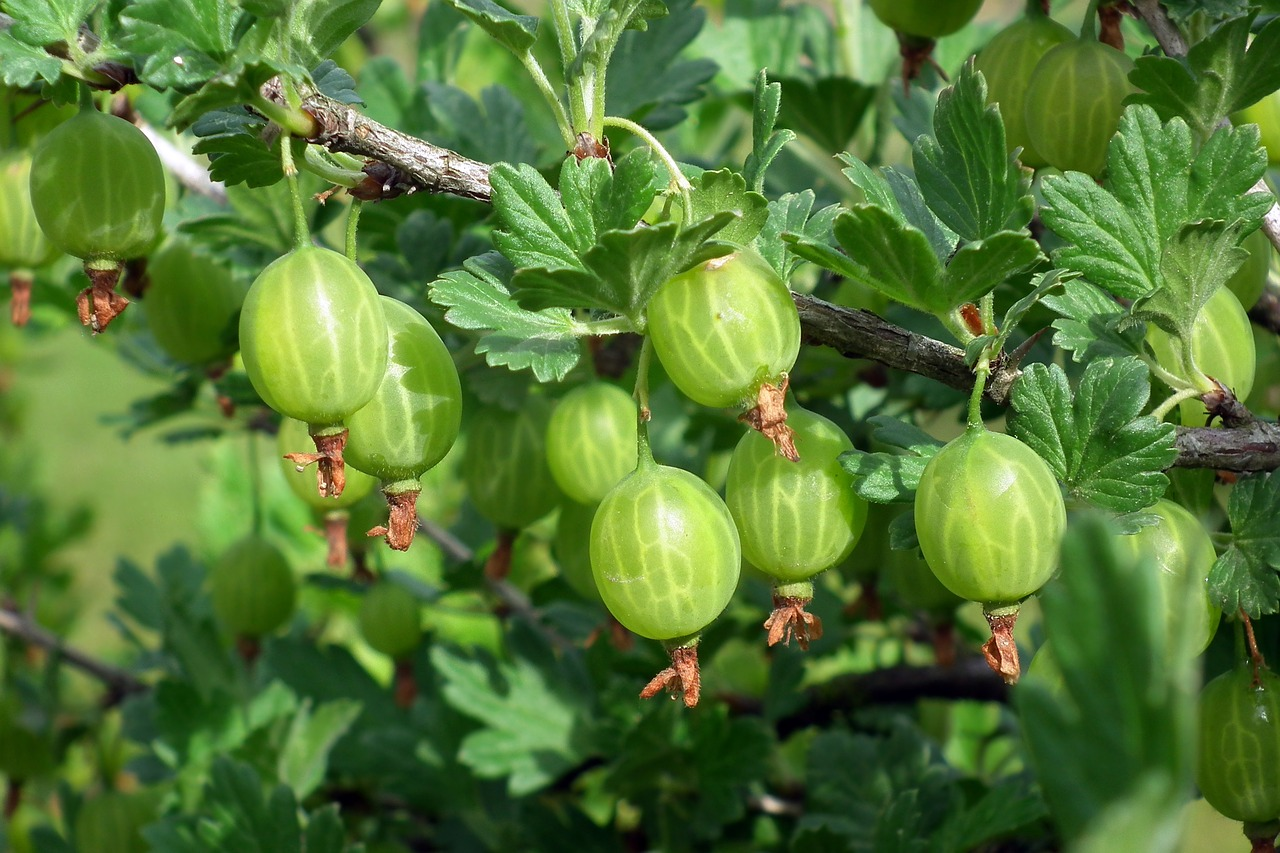
How to Grow Gooseberries: Location & Companion Plants
Gooseberries are native to Europe and are well adapted to temperate climates. The hardy, robust shrub is easy to care for and the perfect addition to your berry hedge in the garden. Gooseberries are not only delicious but also very healthy. They are definitely worth growing! Read this article to find out what you need to consider when growing, caring for and harvesting them.
This Article Contains:
- Growing Gooseberries: What You Need to Know
- The Right Location & Soil
- Plant a Gooseberry Shrub or a Tree?
- Planting Gooseberries: Timing & Instructions
- Companion Plants for Gooseberries
- Mixed Crop Planting Plans With Gooseberries: Examples & Ideas
- Gooseberry Care: Watering, Fertilizing & Pruning
- Common Pests & Diseases of Gooseberries
- Gooseberry propagation: This is how it works
- Harvest time: Harvesting & storing gooseberries
- Frequently Asked Questions About Planting Gooseberries
Quick Overview
Growing Gooseberries: Location, Spacing & Companion Plants
- Light: semi-shady
- Water: moist
- Nutrient requirements: high
- Soil: medium-heavy
- Planting distance: 0.8 to 2 m/0.9 to 2.2 yd, depending on growth habit
- Planting depth: at ground level
- Good companion plants: blueberry, currant, garlic, lemon balm, marigold, chives, gooseberry, vine tomato
Growing Gooseberries: What You Need to Know
Gooseberries (Ribes uva-crispa) are a species of the genus Ribes, like the closely related Currants. Together they form the gooseberry family (Grossulariaceae). The bushy, deciduous shrub can reach a height of up to 3 m/3.3 yd, but rarely grows over 1.5 m/1.6 yd in most gardens. Its branches are covered with the characteristic spines from which the berries got their name. The hanging inflorescences develop from the leaf axils between April and May. One to three flowers grow from each leaf axil. These flowers are hermaphrodite, which means that one flower can fertilize itself. After fertilization, small, hairy berries develop, which grow elongated or spherical depending on the variety and turn green, yellow or dark red.
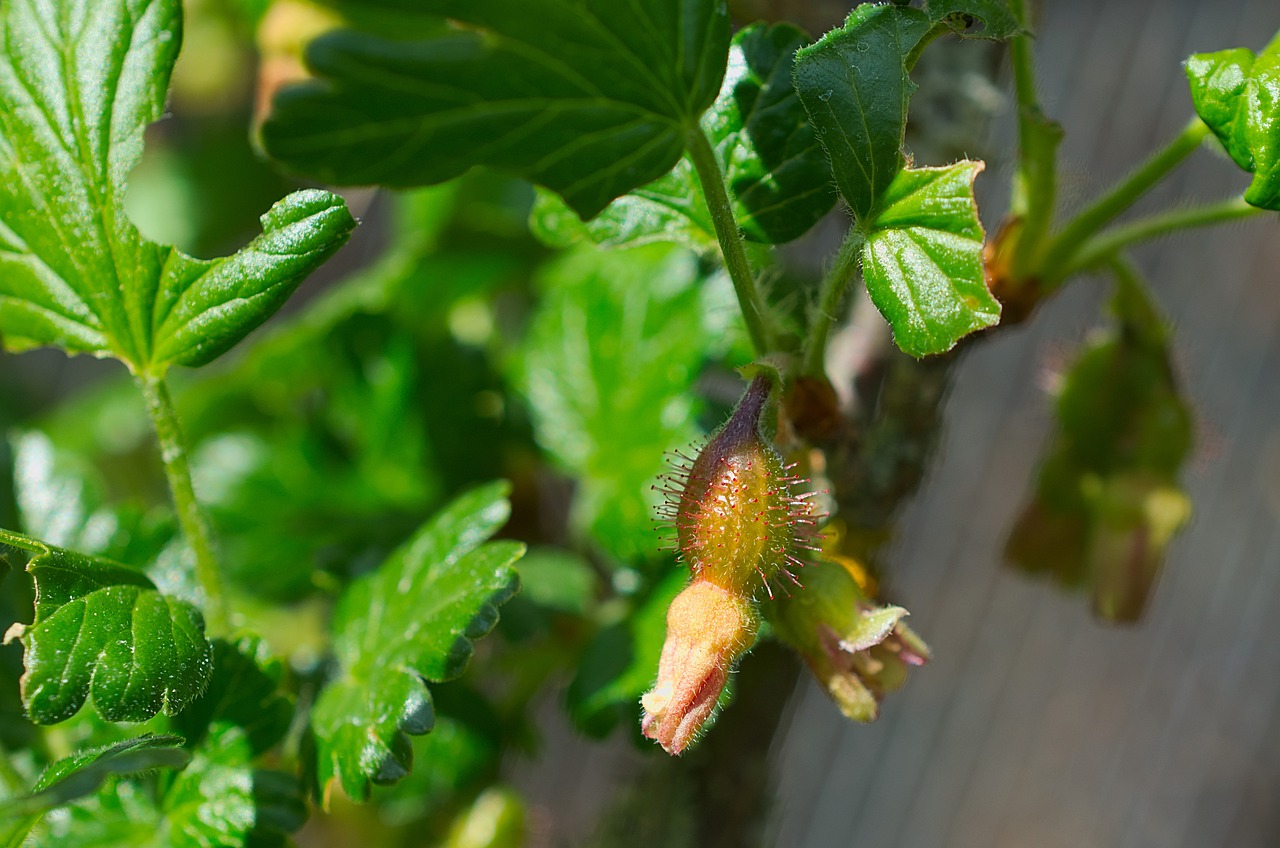
Gooseberry Varieties: An Overview
Depending on the variety and color, the fruits differ in taste. Red gooseberries taste sweet and are hardly hairy, while green and yellow ones have a more acidic taste. Gooseberries are very healthy and contain many vitamins, minerals and secondary plant substances. There is now a huge range of varieties. New breeds have already produced varieties without thorns, which makes harvesting much easier. In addition, there are now some varieties that are resistant to common fungal diseases such as powdery mildew. Although this disease is not life-threatening for a gooseberry bush, it unfortunately makes the berries inedible. Leaves and fruit become covered in an unappetizing layer of mould. To ensure a good yield, a resistant variety can be an advantage.
List of Robust Gooseberry Varieties:
- 'Captivator': This variety produces sweet and sour, red fruits. In addition to its resistance to mildew, this variety has another advantage: its branches are hardly covered with thorns. The thorns also become fewer from year to year. This guarantees an effortless harvest!
- 'Invicta': This variety is high-yielding and produces many light green, sweet fruits. It is not only resistant to mildew, but also to leaf drop diseases.
- 'Remarka': Its dark red fruits are large, sweet and very aromatic. It is particularly resistant and strong against powdery mildew. If there is a lot of fungal pressure in your garden, this variety is a good choice!
- 'Redeva': This high-yielding variety is also hardly susceptible to powdery mildew and leaf drop diseases. Its fruits also have a high resistance to bursting and are less susceptible to sunburn. The variety can also be planted in a sunny location without any problems. The fruits are purple-red and have a sweet to slightly sour taste.

Want to Learn More About Different Varieties?
In our library you will find information on the individual varieties with cultivation periods, tips on planting and harvesting. You will also find good and bad companion plants to help you plan a mixed crop.
View Libary NowThe Right Location & Soil
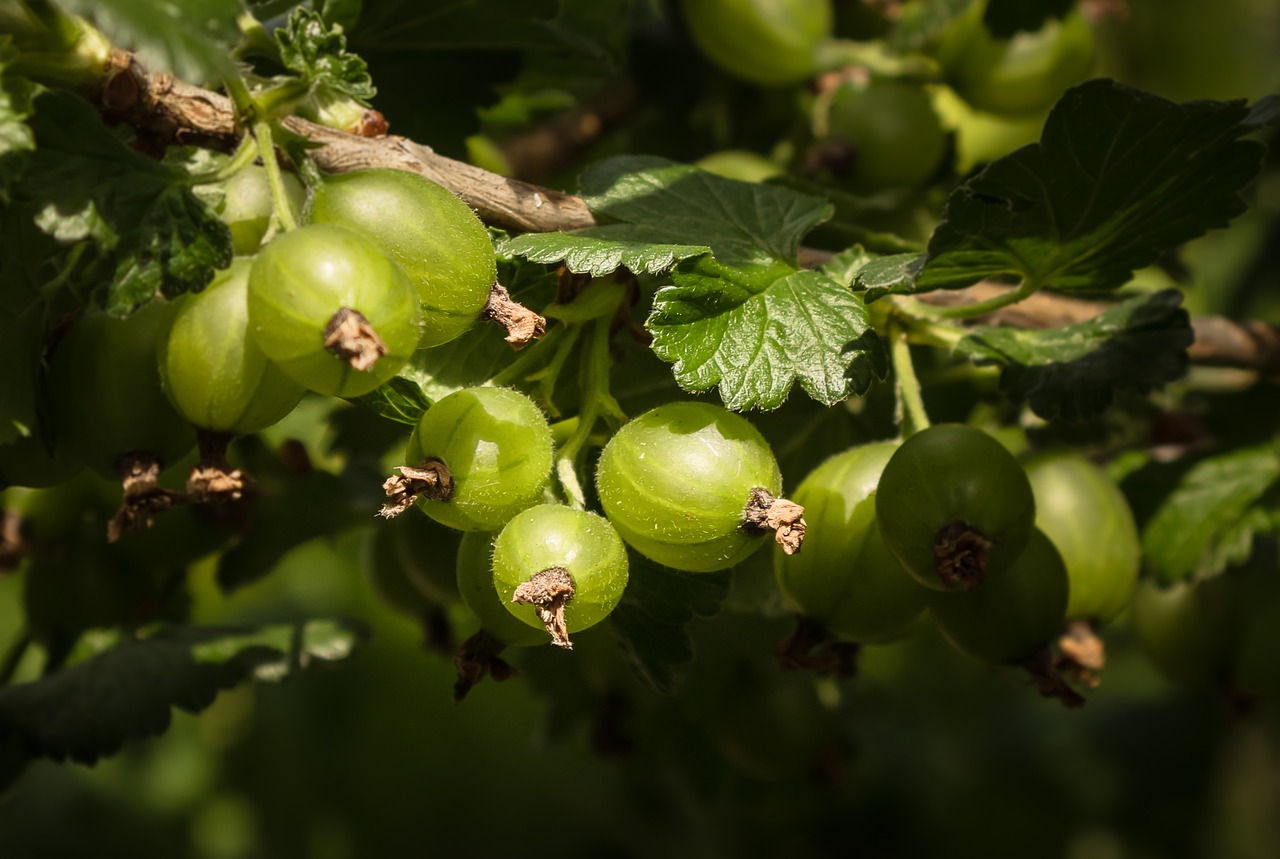
Original wild forms of the gooseberry grow in light, moist to moderately moist forests or forest edges. For this reason, you should choose a location with nutrient-rich, loamy soil. Sandy soils that tend to dry out should be amended with compost. This improves the water retention capacity and also increases the pH value. Gooseberries prefer an alkaline location, and the pH value should be between 6 and 7. Otherwise, the shrub is not particularly demanding in terms of soil and climate. Choose a semi-shady spot, as the berries tend to get sunburnt from too much sun. The best place is in the shade of larger fruit trees or other shrubs. In addition, the shrub is more susceptible to powdery mildew in a full sun location (especially in combination with excessive nitrogen fertilization). Although low temperatures are not a problem for this hardy shrub, you should not plant it in areas where there is a risk of late frost. The early flower formation can otherwise cause damage to the flowers due to frost, which may cost you the harvest.
Plant a Gooseberry Shrub or a Tree?
Gooseberry plants are grown bare-root (i.e. ungrafted) or as a grafted half or standard stem. Both forms are suitable for planting in the garden, it just depends on your preferences, wishes and the available space. A shrub needs 1.2 to 2 m/1.3 to 2.2 yd of space, depending on the variety. In contrast, a standard is more space-saving and requires a planting distance of around 0.8 to 1 m/0.9 to 1.1 yd, depending on the variety planted. If you want to plant a dense hedge, you can choose a smaller spacing.
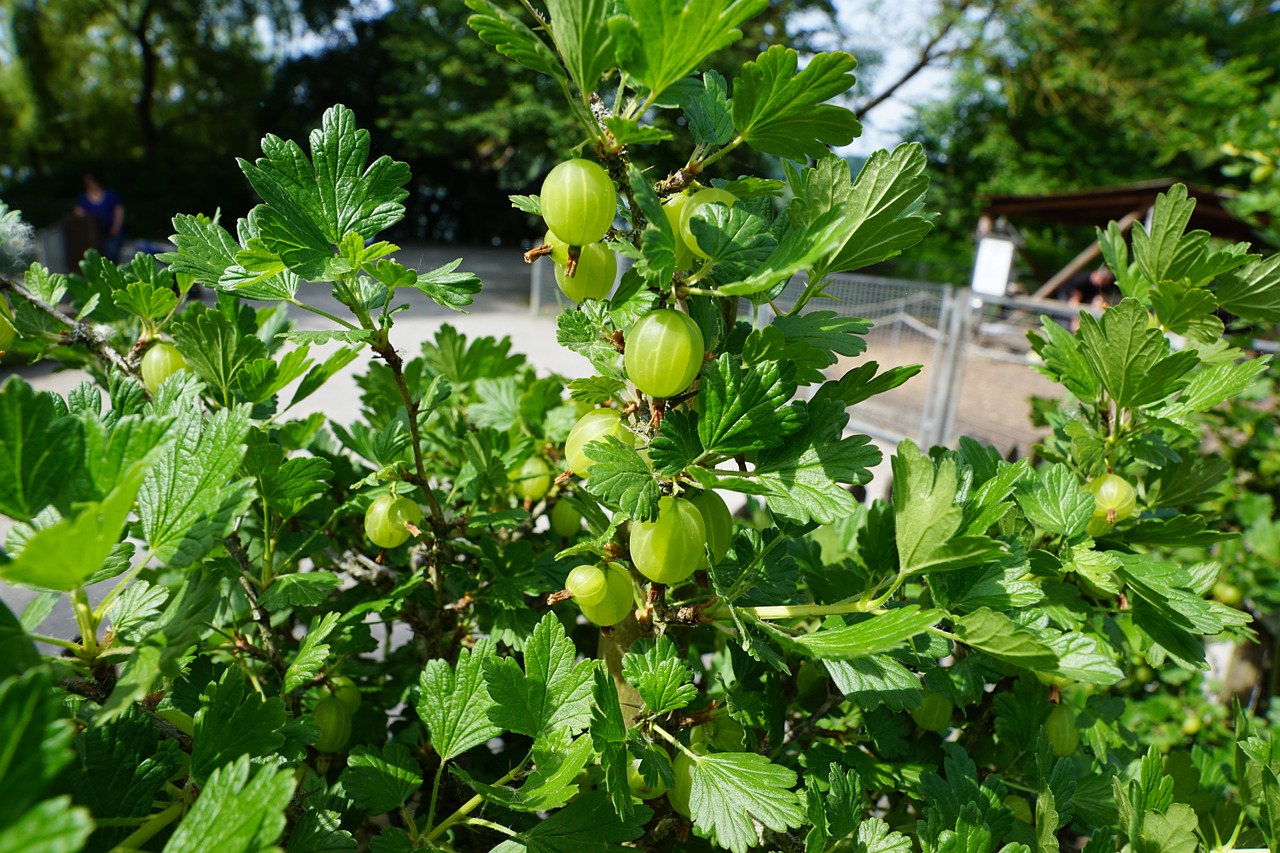
Shrub vs. Bushes: Advantages & Disadvantages
Bushes with tall stems are easier to harvest. Grafted plants are particularly advantageous for varieties with many thorns, as they make care and harvesting easier. This growth form also saves space and can be grown on the balcony. On the other hand, young plants are more expensive to buy (this is due to the previous grafting of the shrubs) and you also need to install a support stake for the shrub. Due to the strong growth of the gooseberry, this support stake must be renewed regularly and adapted to the size. Another disadvantage of the tall stem is that the yield decreases. Due to the long trunk, there are fewer bearing branches and therefore less fruit.
A shrub, on the other hand, is more unclear in its growth, which makes harvesting more difficult. You also have to bend down to reach the berries. One advantage of planting a shrub is that the young plants are cheaper to buy. There is also no need to install and constantly renew a support stake. The yield of a shrub is also significantly higher than that of a standard plant.
Planting Gooseberries: Timing & Instructions
Gooseberries are best planted in late fall (October - November) or early spring (by April at the latest). However, planting in the fall has the advantage that the shrub can grow properly over the winter. Gooseberries are shallow-rooted and therefore dry out relatively quickly, which makes it more difficult for them to grow. The winter moisture allows the shrub to root well in the soil and thus reliably sprout again in spring. When planting during dry periods in summer, you should therefore always make sure that the root ball is always moist.
Step-By-Step Instructions:
- Before planting: Loosen the soil deeply with a digging fork. Sandy soil should be prepared with compost.
- Dig the planting hole: Dig a planting hole that is twice the size of the root ball. Add a little compost or slow-release fertilizer to the planting hole.
- Root pruning: For bare-root plants, all roots are shortened by a few centimetres. This improves growth as root growth is stimulated.
- Planting: Place the shrub in the ground. The plant should be planted at ground level. Pour the soil back into the hole. To minimize cavities around the roots in the soil, you can also gently shake the trunk. Press the soil down firmly and water your new protégé well.
- If you are plantinga standard, install a support stake immediately after planting. To do this, stick a wooden trunk directly next to the root ball and tie the trunk down with wide straps or a coconut rope. Be careful not to damage any roots!
- Apply a layer of mulch. This serves as natural protection against weeds and reduces water evaporation.
- Pruning: Cut back all shoots by about a third. Cut the branches just above a bud growing outwards.
Companion Plants for Gooseberries
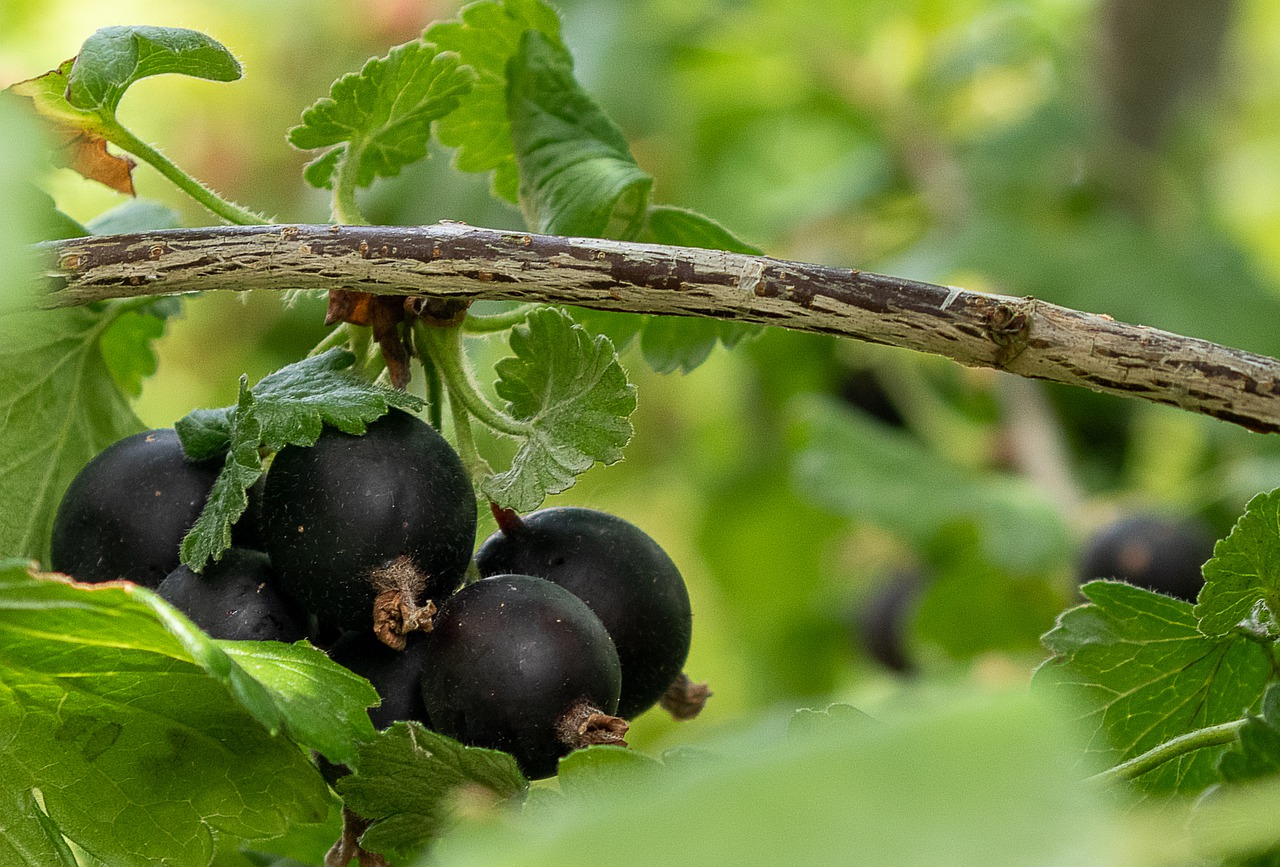
You can also integrate gooseberries perfectly into a forest garden. This works with the principles of Permaculture and Mixed Cultivation, creating a stable system that is less susceptible to diseases or pests. You can find out which fruit trees you can plant for this and how they can be underplanted in the article Planting Fruit Trees.
Although gooseberries are self-pollinating, you can increase the yield by planting plants of the Ribes genus next to each other. This includes not only other gooseberry varieties, but also currants and josta berries. The josta berry is a cross between the currantand the gooseberry. The flowers of your gooseberry bush can be fertilized by the pollen of all these plants. By having several plants, you increase the probability of fertilization enormously and therefore also your yield. You will also have a greater variety of different plants in your garden, which will delight insects and other garden inhabitants.
| Good Companion Plants | Bad Companion Plants |
|---|---|
| Blueberries | Sage |
| Currants | |
| Garlic | |
| Lemonbalm | |
| Calendula | |
| Chives | |
| Tomatoes |
Mixed Crop Planting Plans With Gooseberries: Examples & Ideas
Here are examples of planting plans for gooseberries and currants. Berries work well in a home garden. You can also combine perennial berry bushes with annuals. We have prepared bed plans with berries, herbs and flowers. But you can also combine vegetables such as tomatoes with berries.
Gooseberry Care: Watering, Fertilizing & Pruning
- Fertilize once a year: This is best done before budding in spring (until April). A nitrogen-reduced, potash-based fertilizer is suitable for this. Too much nitrogen fertilization increases the risk of mildew infestation. If necessary, you can follow up with a second fertilization after flowering in May.
- Apply a layer of mulch and renew it regularly. This keeps the soil moist for longer, which is an advantage for the shallow-rooted berries. It also suppresses weeds. Make sure that the mulch layer is loosely distributed around the trunk, as otherwise rot can develop.
- Regularly remove weeds that grow around the gooseberry. You should not use a rake to do this so as not to damage the roots of the shrub. It is better to remove them carefully by hand.
- Gooseberries are sensitive to drought. You therefore need to water regularly, especially during dry periods, so that the shrub can develop lots of berries.
- After flower formation from April to May, you can reduce the number of flowers if there is strong growth. Thinning out supports the formation of the remaining fruits and increases their quality. The rule is: the thinner the branches, the better the light supply and therefore the better the harvest.
- Gooseberries bear fruit on the one-year-old side shoots of older branches. Regular pruning is essential to promote their development and growth. After planting and pruning, you should cut back your gooseberry bushes every year in spring (February - March). This article provides more information on How to Prune Gooseberries Correctly.
- Check your bushes regularly for pests and diseases. I will list the most common ones in the next section. It is important to know that whitish spots on the fruit or brown, dried fruit do not necessarily have a biotic cause. It can also be sunburn caused by excessive sunlight.
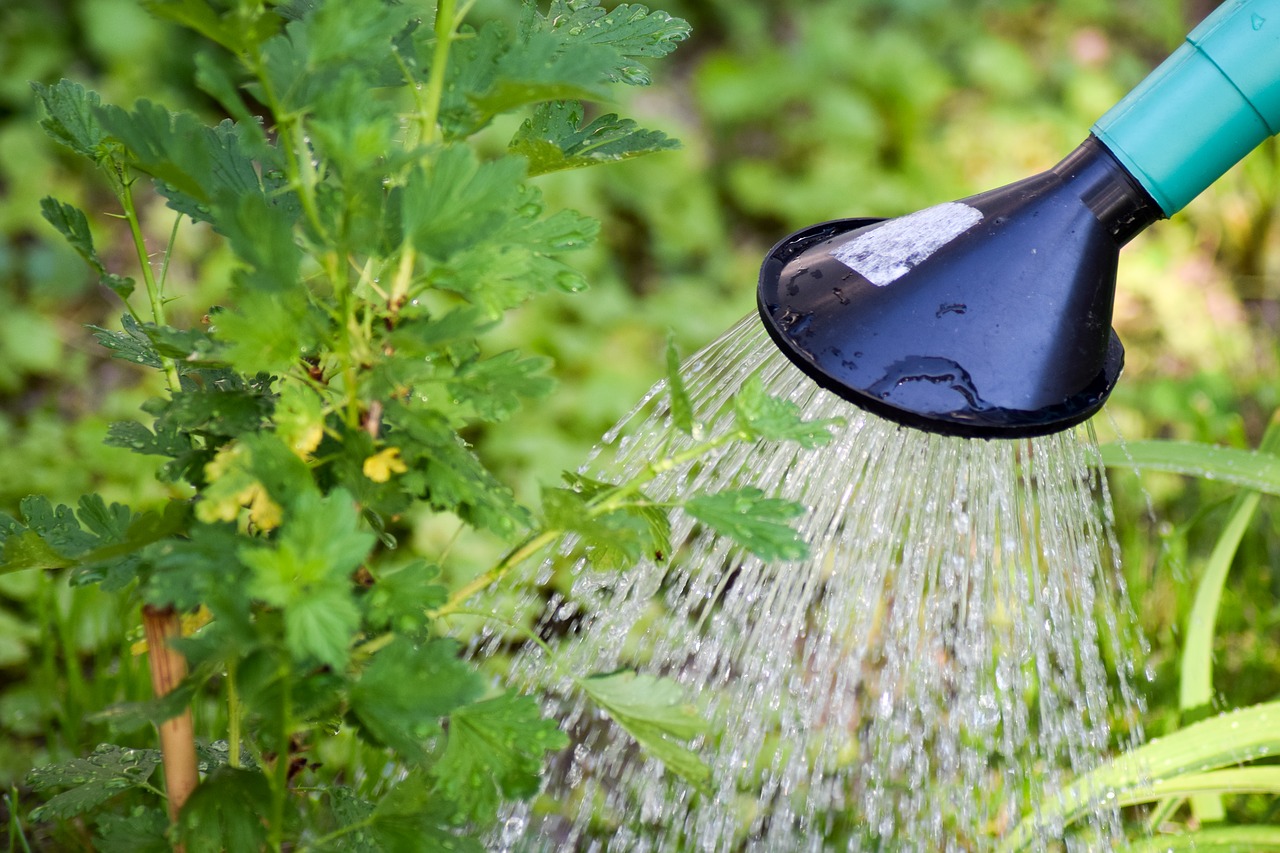
Common Pests & Diseases of Gooseberries
- Check your bushes regularly for powdery mildew infestation. Gooseberries are particularly susceptible to this fungus. The best preventative measure here is to plant resistant varieties. You can recognize an infestation by the characteristic white coating on the upper side of the leaves and brown discoloured shoot tips. The only thing to do here is to remove the affected shoots. Do not dispose of them in the compost, but in the residual waste to prevent the fungus from spreading further in your garden. You can find more Tips on Combating and Preventing Mildew in this article.
- When the leaves of shrubs curl, this often indicates an infestation of (red) spider mites or scale insects. You can use neem oil, tea tree oil or beneficial insects against these uninvited guests. Predatory mites are the beneficial insects of choice against spider mites, and you can also use lacewings for light infestations. The natural enemies of scale insects are parasitic wasps, ladybugs and earwigs. Never use neem oil if you have also applied beneficial insects! Neem oil has a non-specific effect and also kills the little helpers.
Gooseberry propagation: This is how it works
Shrubs are usually propagated vegetatively with cuttings. Seed propagation hardly plays a role with gooseberries. Especially if there are several varieties growing in your garden and you want to propagate a specific variety. It is very difficult to check which plant has fertilized your berries. In most cases, this results in a seedling that is not identical to the mother plant. In this article, you will learn How to Propagate Gooseberries From Cuttings.
Harvest time: Harvesting & storing gooseberries
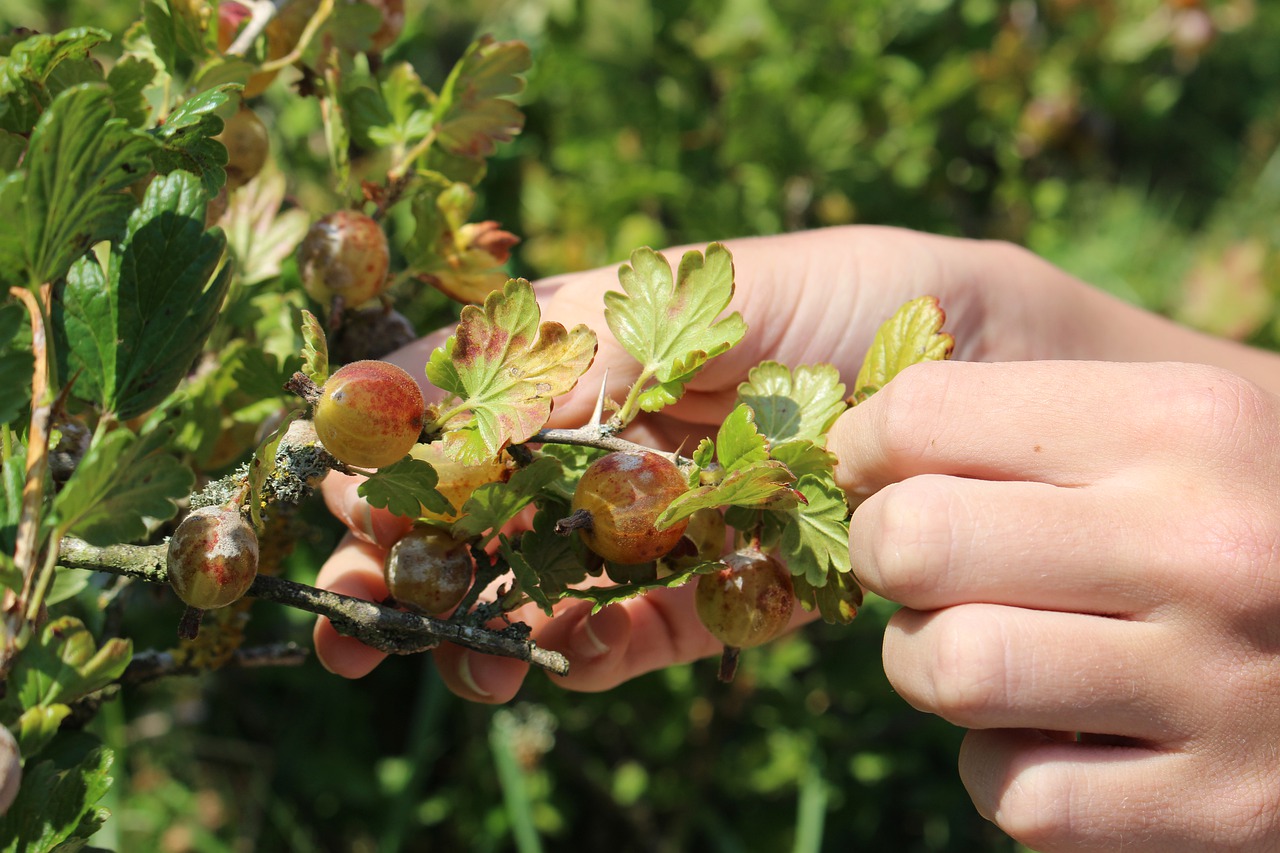
Depending on what you plan to do with your gooseberries, you should harvest them at different stages of ripeness. Green fruits that are not yet fully ripe are best for making cakes, desserts or compotes. Depending on the variety, you can start harvesting at the end of May to the beginning of June. Harvesting fruit that is still green is also known as green picking. A special feature of gooseberries among berries is that their fruits continue to ripen after harvesting. This means you can simply leave the green berries to ripen and enjoy or process them at a later date. The remaining fruits on the bush benefit from a green pick, as they become sweeter and larger. If you prefer to make jams, you should wait a little longer before harvesting. The fruits should already have reached their final size and be harvested about the size of a cherry, slightly firm. To eat gooseberries fresh from the bush, you have to wait until July or August, depending on the variety. Only then will they have developed their full flavor.
Good luck with growing your own gooseberries! If you have any questions or other comments on the topic, please write to magazin@fryd.app.
Want to get helpful gardening tips all year round and plan your own beds in the best possible way? Then register here or download the Fryd app for Android or iOS.
Fryd - Your digital bed planner
Cover picture: MrGajowy3 on Pixabay.
Marie
Current Topics in the Community
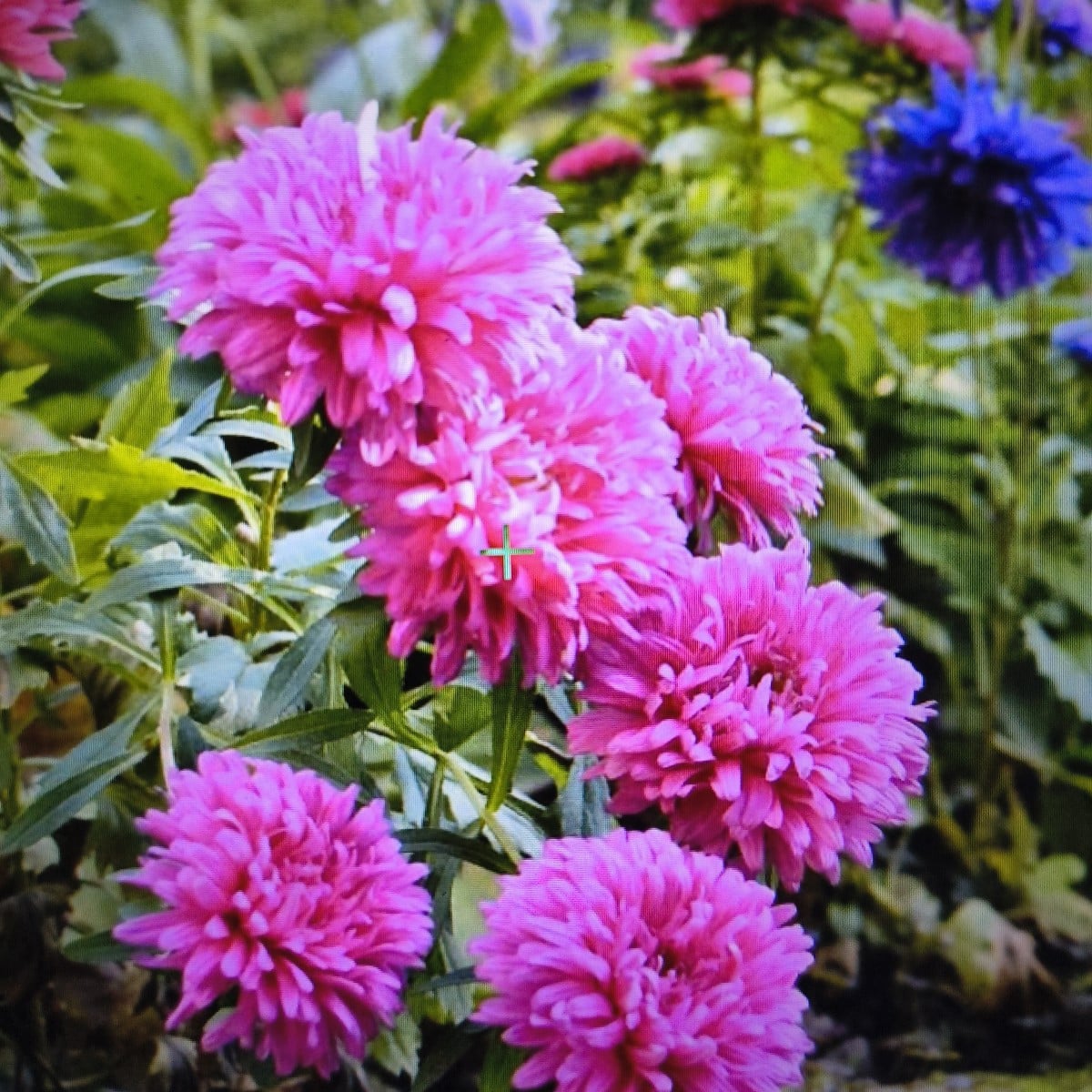
This is my new post on fryd

My plan shere in community
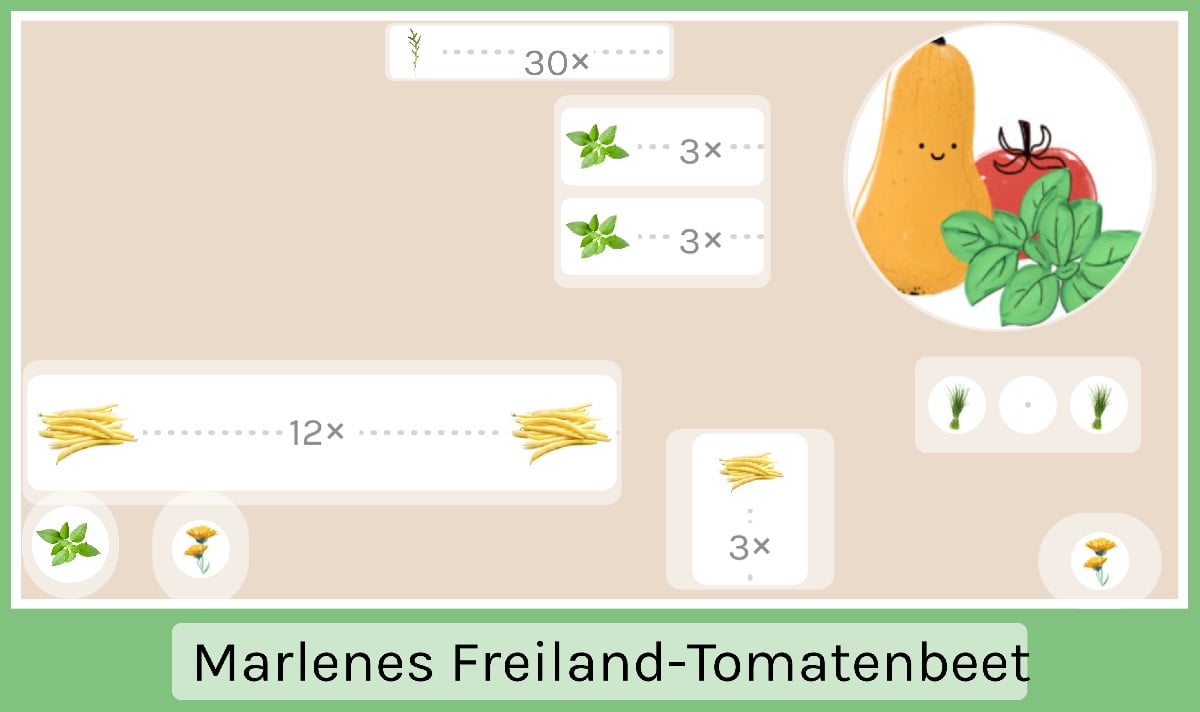
Hi
Popular Articles

Companion Plants for Carrots: What (Not) to Plant With Carrots

Companion Plants for Celery : What (Not) to Plant With Celery?

Strawberry Types: List of Best Strawberry Varieties

Companion Planting With Strawberries: Companion Plants and Planting Plan

Basil Varieties & Types at a Glance

What to Plant With Cabbage: Good and Bad Companion Plants

Fertilizing Strawberries: Home Remedies & Natural Fertilizers at a Glance

Growing Sweet Potatoes: Tips on Cultivation & Companion Plants

Companion Plants for Kitchen Herbs: Chives, Parsley & Co

What Herbs Can Be Planted Together?
FAQ
When is the best time to plant gooseberries?
The best time for planting is in late fall, between October and November. This allows the shrub to grow well over the winter. However, you can also plant in spring by April at the latest.
What is the right location for gooseberries?
Gooseberries like to grow in nutrient-rich, loamy soil with a pH value between 6 and 7. It is best to choose a semi-shady spot, as gooseberries tend to get sunburnt.
What are good companions for gooseberries?
You can plant blueberries, currants and jostaberries next to gooseberries. Other good neighbors are garlic, lemon balm, marigolds, chives and tomatoes.
Depending on the variety, gooseberries are harvested between July and August. If you want to harvest green fruits that are not yet fully ripe, you can start harvesting at the end of May.